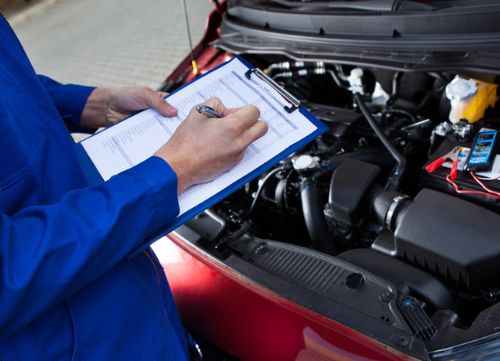
Clean Air Day is the UK’s largest campaign on air pollution. This year, it takes place on 16th June – and as a business that deals in the motoring space, we thought we’d jump on board with the campaign’s message and encourage fleets everywhere to reduce their carbon emissions.
It’s a particularly pertinent message at the moment, with an ongoing fuel crisis hitting fleet expenses hard and EU emission reductions targets to hit in both 2025 and 2030. With that all in mind, the importance of reducing your fleet's emissions has never been higher – from both an environmental, and commercial perspective.
This Clean Air Day, make reducing fleet emissions a priority by taking any (or even all!) of the following measures…
Do you know how much fossil fuel your fleet uses – and therefore how much greenhouse gas your business is directly responsible for? If not, that should be the first place to start.
According to Fleet News’ carbon footprint calculator:
Sustainability-focused website Ecoscore, meanwhile, calculates that 1 litle of LPG fuel is equivalent to around 1.66kg of CO2.
You can use either of those tools to help you calculate your fleet’s own consumption. Once you’ve done that, you can then move on to look at ways to reduce your fleet's emissions.
Vehicles are at their most fuel efficient in free-flowing traffic, which means planning routes to avoid traffic build-ups is absolutely paramount for reducing your fleet’s emissions. Likewise, crossing traffic lanes is also less fuel efficient, since it asks your fleet’s drivers to slow down and often idle in gear while waiting for a gap in traffic. This Clean Air Day, reducing fleet emissions could mean employing an efficient telematics-based system to plot your journeys factoring in what’s likely to be the quickest and most direct route. At SG Fleet, we have a tool to help with exactly that. It’s called Motrak, and you can find out more about it here.
The more people in a single car, the less individual vehicles are on the road at any one time. That’s why one approach you might want to take to reducing your fleet’s air pollution is to encourage car-sharing. Not only will doing so help the environment, it will also help to reduce your fleet’s scope 3 emissions, making your company greener overall.

Another effective way to reduce your fleet's emissions is to make sure your light commercial vehicles (LCVs) are all right-sized. In many cases fleets tend to use larger vans than needed, so taking a magnifying glass to the way you use vehicles – and swapping out larger ones for smaller, more fuel efficient ones, can make a significant dent in your business’s CO2 output.
Did you know that tyres come with a fuel efficiency rating? Ones with a higher rating essentially have a lower rolling resistance, which allows the vehicle to be propelled faster with less friction getting in the way of fuel efficiency. Choosing more fuel efficient tyres can therefore help significantly in reducing your fleet’s air pollution – as can training your drivers to consistently check tyre pressure at rest stops.
Speaking of tyres, this is something your maintenance team should catch if you’re doing thorough and regular checks of your fleet’s vehicles. In fact, maintaining your vehicles right across the board will make sure they’re running as efficiently as possible. Yet another of the effective ways to reduce fleet emissions during clean air day and beyond.

Driver behaviour also plays a large part in your fleet’s fuel consumption – and therefore in your fleet’s CO2 output. Fuel efficient behaviours like gradual acceleration, gentle breaking and sticking to speed limits can all hep to keep your numbers low. Conversely, hard acceleration, harsh breaking, and excessive speeding all use more fuel – and make it harder for your fleet to meet its emissions reduction targets. Our advice? Run regular workshops to make sure your drivers know your company policy on best practice behind the wheel.
The last of our ways to reduce fleet emissions is to move away from internal combustion engine (ICE) vehicles altogether and make the move into an all-electric fleet future. Of course, that may be easier said than done if your fleet lacks an electric charging infrastructure. That said, we’re currently less than eight years from the end of petrol and diesel vehicle manufacture on UK soil. And with the first EU emissions targets due in at the end of 2024, fleet businesses everywhere should already be thinking about making that switch in the near future.
At SG Fleet, we’re well equipped to help you with that change. First, we offer a market-leading LCV leasing service, and second, we have an electric solution called eStart which offers a complete Zero Emission Vehicle Transition Plan to aid you in making the transition to electric vehicles.
Never fear – we’re here to help your fleet business solve exactly those issues.
Get in touch with us today on 0844 854 5100 or by emailing CSalmon@sgfleet.com.